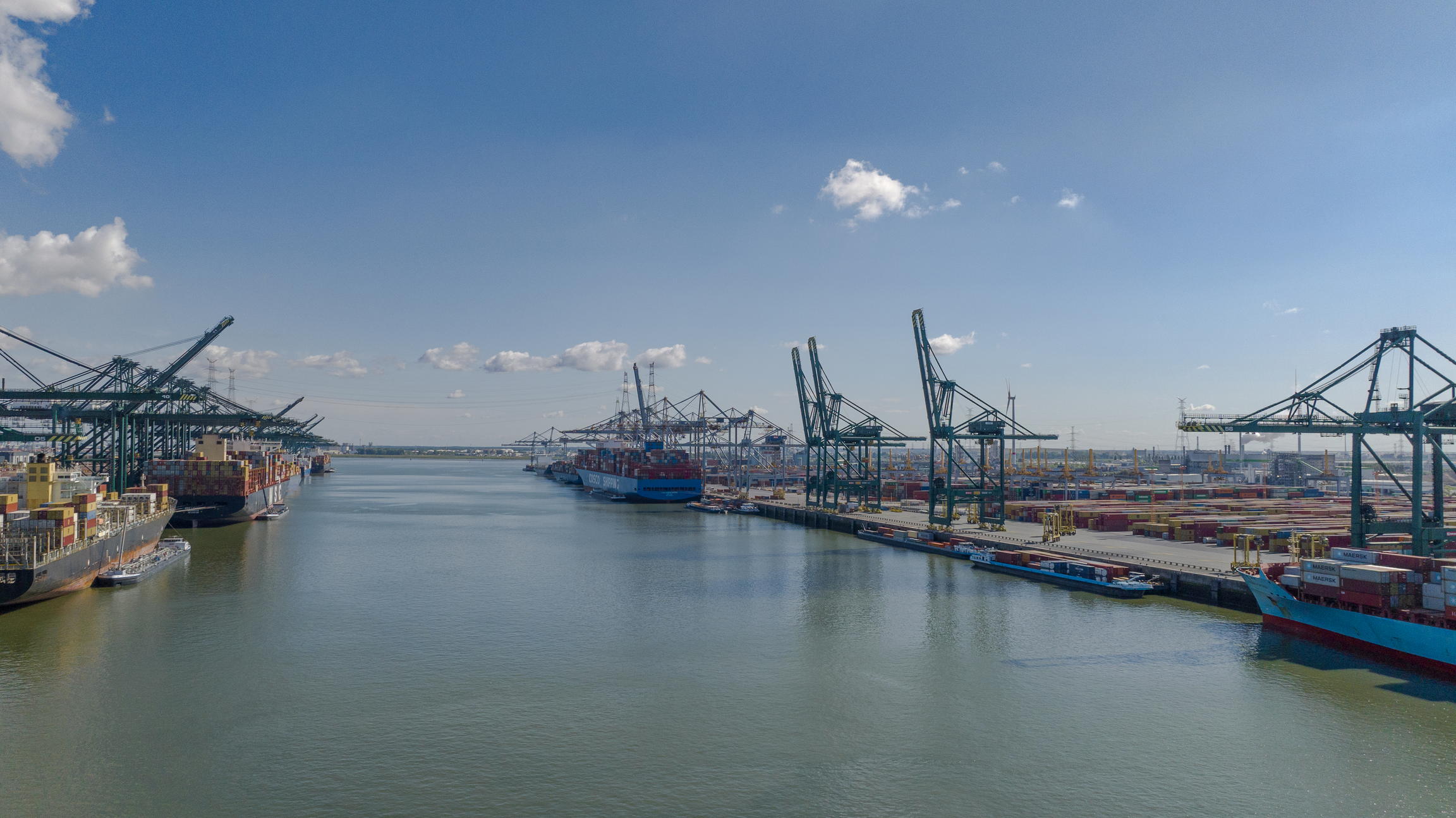Impact of U.S. Import Tariffs
Strong Trade Relationship with the U.S.
The United States has been the second-largest global trading partner of Port of Antwerp-Bruges for over two decades. In 2024, the maritime trade volume totaled 28 million tonnes, accounting for approximately 10% of the port's overall cargo traffic. Of this, 11 million tonnes were exports to the U.S., and 17 million tonnes were imports from the U.S.
With 14.2 million tonnes, container traffic is the largest segment. Exports from the port (6.6 million tonnes or 613,437 TEU) mainly consisted of auto and machinery parts (mostly from Germany), chemicals, vehicles, food, plastics, and pharmaceuticals. Imports from the U.S. (7.6 million tonnes) included plastics, polymers, chemicals, rubber, vehicles, food, and pharmaceuticals.
A total of 10.2 million tonnes of liquid bulk was traded. Exports (1.8 million tonnes) mainly included gasoil, fuel oil, and chemicals. Imports from the U.S. amounted to 8.2 million tonnes, including LPG, LNG, naphtha, and other chemical products.
In 2024, 282,000 vehicles were handled via RoRo traffic—206,000 shipped to the U.S., and 76,000 imported from the U.S. This makes Antwerp-Bruges responsible for over a quarter of Europe’s transatlantic finished vehicle traffic.
Conventional breakbulk amounted to 1.3 million tonnes, mostly steel from Europe. Dry bulk (1.2 million tonnes) included fertilizers heading to the U.S., and wood pellets, coal, and non-ferrous metals in the opposite direction.
U.S. Import Tariffs Since March 2025
Since March 2025, the U.S. government has imposed a series of new import tariffs. As of 12 March, a 25% tariff applies to iron, steel, aluminum, and derived products from around the world. On 3 April, this was extended to include cars and car parts, also at 25%.
On 2 April, an additional measure was introduced: a general 20% increase on goods originating from the European Union. These steps are part of a broader trade policy also targeting other countries, including China (34%), Japan (24%), and South Korea (25%).
On 9 April, the U.S. administration announced a 90-day temporary pause for countries open to negotiations. For the European Union, this means a provisional 10% import tariff applies during the negotiation period.
EU Countermeasures in Two Phases
In response, the European Union has decided to reactivate its previously suspended countermeasures from 2018 and 2020. These include tariffs on iconic U.S. export products such as Harley-Davidson motorcycles, bourbon whiskey, and boats, directly countering the U.S. steel and aluminum tariffs.
A second phase follows on 15 April, introducing additional measures worth €18 billion. These will target both industrial and agricultural products, including steel and aluminum, textiles, leather goods, household appliances, tools, plastics, wood products, and foodstuffs such as poultry, beef, seafood, nuts, dairy, sugar, and vegetables.
Like the U.S., the EU has temporarily paused these countermeasures during the 90-day negotiation window.
Impact of Tariffs on the Port
The Port of Antwerp-Bruges is closely monitoring the developments around the U.S. import tariffs. So far, there have been no significant traffic shifts directly linked to the recent measures. While some companies are acting in anticipation, a marked increase in exports to the U.S. has not materialized.
For example, container exports to the U.S. rose by 3.2% in Q1 2025 compared to the same period last year—a growth rate below the overall container traffic increase (+4.6%). Steel exports peaked in January with 100,000 tonnes but have since fallen. Over the entire first quarter, steel exports to the US were 2% higher than in Q1 2024. In Q1 2025, 37,743 cars were exported to the US, a decrease of 19.5% compared to last year, in line with the overall decline in car exports (-13.5%). Liquid bulk throughput (such as LPG, LNG, and naphtha) remained stable, with a slight increase of 2.8%. Exports of chemical products grew by 13.9%, while imports fell by 6.2%.
Although the direct impact remains limited for now, it is clear that further developments in trade tariffs and geopolitical tensions could affect the logistics chain. Port of Antwerp-Bruges remains in close contact with companies and terminals active in container shipping, chemicals, and automotive logistics, and is continuously monitoring the situation.
The port continues to focus on ensuring smooth cargo flows, in close coordination with its customers and partners. Even in complex circumstances, Antwerp-Bruges remains a reliable and agile gateway to Europe.
Over the entire first quarter, steel exports to the US were 2% higher than in Q1 2024. In Q1 2025, 37,743 cars were exported to the US, a decrease of 19.5% compared to last year, in line with the overall decline in car exports (-13.5%). Liquid bulk throughput (such as LPG, LNG, and naphtha) remained stable, with a slight increase of 2.8%. Exports of chemical products grew by 13.9%, while imports fell by 6.2%.
4o
